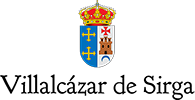CAMINO DE SANTIAGO
Spirituality, faith and effort join hands on Camino de Santiago
Pilgrims who do not give up all the stages of the French Way to Santiago de Compostela will be rewarded for their efforts by contemplating unique examples of religious architecture. There is a reason why this route was named a World Heritage Site in 1993. In addition to its clear religious vocation, the Camino de Santiago is considered one of the backbones of Europe and a gateway to knowledge in Spain.
Stage number 25 of the Jacobean route, which starts in Frómista and ends in Carrión de los Condes, offers the visitor a pleasant surprise. The route will take them along a flat, uneven path, with the fields of Castile as its companions. The stretch that joins these two towns may seem monotonous, but what the walker finds in the villages he crosses are many reasons to stop.
With six kilometres to go to Carrión de los Condes, the pilgrim will come across Villálcazar de Sirga. After a long straight line that runs parallel to the P-980 road from Villarmentero de Campos, you will reach this town. Shortly after seeing its silhouette cut out on the horizon, you will find the sports courts of this village, where the Calle del Ángel begins, which will guide your steps towards the Plaza Mayor.
After contemplating this architectural marvel, the pilgrim must continue his journey. To do so, they must return to the road from which they arrived in Villalcázar, but not without first regaining their strength and tasting some of the delicacies that have made the gastronomy of this town so famous thanks to the inns, bars and tascas. Ahead, six kilometres of Castilian plains to Carrión de los Condes and 441 to Santiago de Compostela.
Those who wish to extend their stay in Villalcázar de Sirga have several accommodation options:
- Municipal hostel for pilgrims open from May to September. 20 beds. Price: donation.
- Don Camino Hostel is open from February to November. Price: 7 euros
- Hostal Las Cantigas
- Hostal Infanta Doña Leonor
